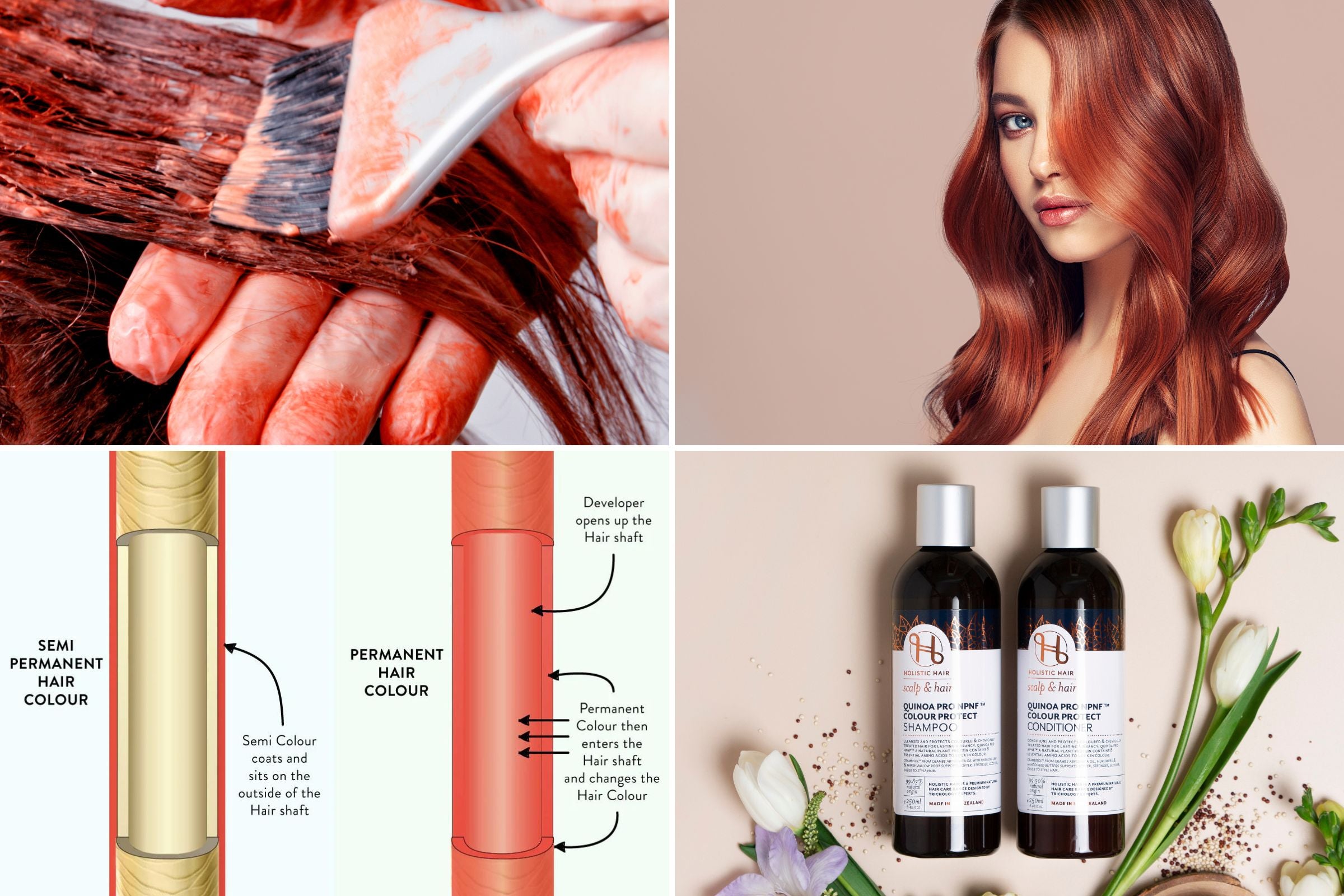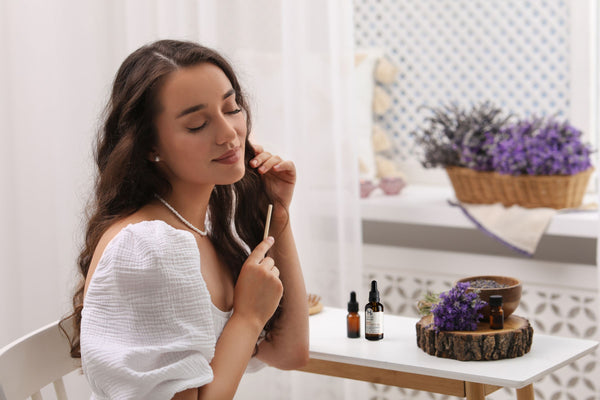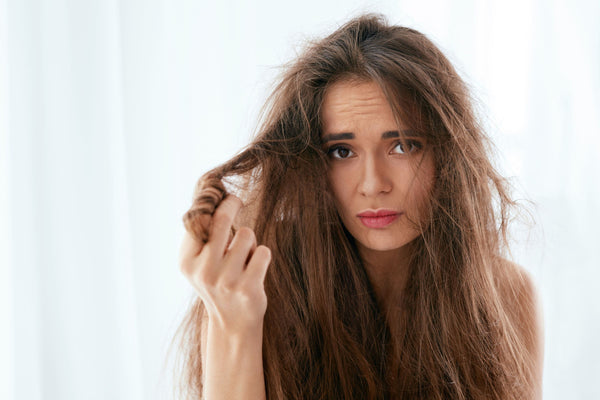Your Cart is Empty
FREE DELIVERY WITHIN NZ FOR ALL ORDERS OVER $50 | $10 FLAT RATE AIR SHIPPING TO AUSTRALIA ORDERS UNDER 3KG

Whether your hair is natural, coloured, or chemically treated, it’s important to keep it healthy and protected. Our hair and hair colour play an important role in our physical identity. Why we choose to colour our hair and how this occurs differs from person to person, but regardless, the colouring process itself can damage the hair, requiring ongoing care, repair and maintenance.
But what does the colouring process actually do to the physiology and integrity of our hair?
Hair grows from the hair follicle and is largely made up of chains of amino acids and proteins called keratin. Due to chemical treatments, overstyling, and environmental stressors, keratins wear out, creating gaps in the hair that eventually lead to damage and breakage.
Permanent, demi-permanent, semi-permanent, or bleached hair requires the use of chemicals such as ammonia and hydrogen peroxide. These chemicals open the outer lining of your hair (the cuticle) so they can penetrate and deposit color. This dyeing process weakens the structure of your hair since it breaks down the proteins that keep it strong and elastic. Coloring your hair also makes it more porous, which causes it to absorb and release moisture more easily. This, in turn, causes a loss of colour molecules every time your hair gets wet.
Let’s talk about how colour is made in the follicle.
Hair is mainly keratin, the same protein found in skin and fingernails. The natural colour of hair depends on a stem cell type called a melanocyte, which is responsible for the production of melanin (pigment) in the bulb of the hair. Melanin is a pigment derived from an amino acid called tyrosine. The catalyst tyrosine is responsible for the chemical reaction that results in the formation of two distinct melanins: the brown-to-black eumelanin and the yellow-to-reddish pheomelanin. Eumelanin is responsible for brown to black hair shades, while phaeomelanin is responsible for golden blond, ginger, and red shades. The absence of either type of melanin produces white or grey hair.
How did you get your natural hair colour?
The type and amount of melanin in hair are determined by many genes. MC1R is the best-studied human hair-color gene. This gene provides instructions for making a protein called the melanocortin 1 receptor, which is involved in the pathway that produces melanin. The melanocortin-1 receptor controls which type of melanin is produced by melanocytes. When the receptor is turned on (activated), it triggers a series of chemical reactions inside melanocytes that stimulate these cells to make eumelanin. If the receptor is not activated or is blocked, melanocytes make pheomelanin instead of eumelanin. Many other genes also help to regulate this process. Most people have two functioning copies of the MC1R gene, one inherited from each parent. These individuals have black or brown hair because of the high amount of melanin. It is estimated that more than 90 percent of people in the world have brown or black hair.
Hair colour ranges across a wide spectrum of hues, from flaxen blond to coal black. Many other genes aside from MC1R play a role in determining shades of hair colour by controlling levels of eumelanin and pheomelanin. The colour of your hair may change over time. Light hair colour may darken with age, especially in people of European descent. Blonde-haired children often have darker hair by the time they are teenagers. Researchers speculate that certain hair pigment proteins are activated as children grow older, perhaps in response to hormonal changes that occur near puberty.
Why does hair turn grey?
Almost everyone's hair will begin to grey as they age, although when and to what extent this occurs is variable. Greying of the hair is mainly hereditary and may vary by ethnic origin, but it is also somewhat dependent on external factors such as stress and certain diseases that can also trigger early greying. Hair becomes grey when the hair follicle loses its ability to make melanin, but exactly why this occurs is not fully understood. Vitamin deficiencies are thought to play a part. Vitamin B12, folic acid, biotin, and trace element deficiencies such as vitamin D3, copper, and calcium are associated with premature greying of the hair.
What types of hair colorants exist and how do they work?
People have been colouring their hair for thousands of years using plants and minerals. Some of these natural agents contain pigments (e.g., henna, black walnut shells), while others contain natural bleaching agents or cause reactions that change the colour of hair (e.g., lemon and vinegar). Natural pigments generally work by coating the hair shaft with colour. Some natural colorants last through several shampoos, but they aren't necessarily safer or gentler than modern formulations. It's difficult to get consistent results using natural colorants, and some people are allergic to the ingredients.
How do semi-permanents, demi-permanents, and permanent hair colour processes work?
Semi-permanent hair colour is an ammonia-free hair dye, and unlike demi-permanent hair color, it doesn’t require a developer to be used. It is also referred to as toner, gloss, or stain; this is because it only coats the surface of the hair and does not penetrate the hair strands, which indicates that it doesn’t cause any permanent change to your hair structure or color. The semi-permanent hair colour lasts for five to twelve shampoos.
Demi-permanent hair colour is an alkaline, ammonia-free product. It comes in different shades and washes out after 24 to 28 shampoo washes. The demi-permanent hair colour deposits pigments on the surface of the hair; it blends the hair colour in a very safe way; it doesn’t penetrate the hair strands, nor does it lighten the hair color.
With permanent colour, the outer layer of the hair shaft, its cuticle, must be opened before permanent colour can be deposited into the hair. Once the cuticle is open, the dye reacts with the inner portion of the hair, the cortex, to deposit and/or remove colour. Most permanent hair colouring products use a two-step process (usually occurring simultaneously) that first removes the original colour of the hair and then deposits a new colour. It's essentially the same process as lightening, except a colorant is then bonded to the hair shaft. Ammonia is the alkaline chemical that opens the cuticle and allows the hair colour to penetrate the cortex of the hair. It also acts as a catalyst when the permanent hair colour comes together with the peroxide. Peroxide is used as the developer or oxidising agent. The developer removes the pre-existing colour. Peroxide breaks chemical bonds in the hair, releasing sulfur, which accounts for the characteristic odour of hair colouring products. As the melanin is decolorized, a new permanent colour is bonded to the hair cortex. Various types of alcohols and conditioners may also be present in hair-colouring products. The conditioners close the cuticle after colouring to seal in and protect the new colour.
Hair Lightening
Hair lightening uses bleach. The bleach reacts with the melanin in the hair, removing the colour through an irreversible chemical reaction. The bleach oxidises the melanin molecule. The melanin is still present, but the oxidised molecule is colorless. However, bleached hair tends to have a pale yellow tint. The yellow colour is the natural colour of keratin, the structural protein in hair. Also, bleach reacts more readily with the dark eumelanin pigment than with the phaeomelanin, and some gold or red residual colour may remain after lightening. Hydrogen peroxide is one of the most common lighting agents. The peroxide is used in an alkaline solution, which opens the hair shaft to allow the peroxide to react with the melanin.
What can we do to protect the hair from colour fade and repair the damage from colour processing?
If you follow these tips, you will certainly minimise hair colour fade and overall damage, revealing healthier hair that will withstand your next hair colour treatment. Healthy hair is seen as shiny, silky-soft, smooth, and resistant to breakage. Taking the time to follow good hair care practices will benefit the appearance and feel of your hair.
Holistic Hair is a premium natural hair care brand manufactured in New Zealand under the FernMark licence. Products are designed for a circular economy and are sustainably produced, plant-based, and cruelty-free. Packaging is glass or bottles made from 100% recycled PET1 BPA-free plastic. Cleanhub has certified the company as "plastic neutral plus."
Authored by Nicky James-Baird [Diploma of Higher Associate Trichologist and Cosmetic Chemist]



Achieving natural, healthy hair is everyone’s dream, but it comes with its own set of challenges. Breakage, dryness, and frizz are some of the most common issues. Fortunately, with the right knowledge and products, these problems can be effectively addressed. In this blog post, we will delve into the causes of these issues and provide practical solutions to help you achieve healthier, more manageable natural hair.